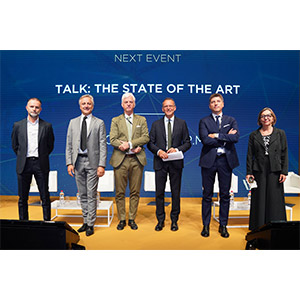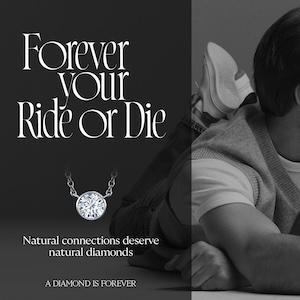
If you want to get a picture of how the coronavirus pandemic closures and lockdowns affected the jewelry industry, here’s a sobering statistic, courtesy of De Beers Group executive vice president Stephen Lussier: “There was one month in Q2 where 93% of all the jewelry stores in the world were closed.”
Lussier was at the VicenzaOro fair—presented by the Italian Exhibition Group and running Sept. 10–14 at Fiera di Vicenza in Vicenza, Italy—for an opening-day panel entitled “The State of the Art,” which centered on, not surprisingly, the pandemic and the ensuing (and ongoing) recovery. He was joined by luxury heritage brand executives Jérôme Favier, CEO of the Damiani Group; Massimo Fasoli, CEO and jewelry designer of Fasoli S.p.A; and Nicolò Rapone, operations senior director of the jewelry business unit for Bulgari. Stefania Trenti, industry office manager at Intesa Sanpaolo’s Study and Research Centre—a financial think tank inside the country’s largest bank—provided macroeconomic data on the gold and jewelry sector. Andrea Cabrini, director of Class CNBC, served as moderator.
“I’ve been in the diamond and jewelry business for 40 years and I’ve never seen anything with the profound impact this has had,” Lussier said. Admitted Bulgari’s Rapone: “The initial impact at the beginning of the lockdown was huge.” As for Fasoli, which has six retail locations—three in the northern Italian town of Brescia alone—“in Venice we had a 99.9% drop in customers,” said the CEO, who ended up going door-to-door and personally visiting with his customers during the pandemic. (“Many customers decided to buy themselves a present for themselves because they had survived,” he said.)
And now for the (sort of) good news: “American diamond jewelry so far this year is 40% up on 2019,” said Lussier. “But demand is still running ahead of available supply.”
Trenti mentioned that vaccine implementation is lagging in many countries—and, of course, “that is necessary to restart international movement.” She predicted a small drop in the price of gold, though she said it would “remain pretty high.” And, most important, the phrases bottlenecks in the transports and scarcity in commodities came up more than once throughout the panel. (JCK editor-in-chief Victoria Gomelsky addressed the supply chain issues at length in this New York Times story.)
“In colored gemstones, there is a risk of shortage—emeralds, rubies, etc.,” acknowledged Rapone.
Yet overall, the heads of these historic brands—which, collectively, have been in business for well over 500 years—are very optimistic when looking at the next generation of digital-savvy, sustainability-focused jewelry buyers. “Customers today are well-prepared, [well-]trained on diamonds and jewels,” said Damiani’s Favier. “Our consumers are ready to buy with a click today,” added Fasoli.
Trenti’s research showed that online jewelry sales are estimated to rise to 18–21% by 2025—compared to 13% in 2019. “If you don’t know how to sell through e-commerce, said Lussier, “you’ve got a big problem.”
Top: From left: Massimo Fasoli, Jérôme Favier, Stephen Lussier, Andrea Cabrini, Nicolò Rapone, and Stefania Trenti (photo courtesy of VicenzaOro)
Follow JCK on Instagram: @jckmagazineFollow JCK on Twitter: @jckmagazine
Follow JCK on Facebook: @jckmagazine






